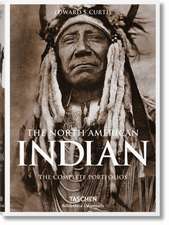Public Memory of the Sand Creek Massacre
Autor Lindsay Regan Calhounen Limba Engleză Hardback – 27 noi 2012
Preț: 625.70 lei
Preț vechi: 680.11 lei
-8% Nou
Puncte Express: 939
Preț estimativ în valută:
119.74€ • 124.25$ • 100.08£
119.74€ • 124.25$ • 100.08£
Carte tipărită la comandă
Livrare economică 17-31 martie
Preluare comenzi: 021 569.72.76
Specificații
ISBN-13: 9781604978193
ISBN-10: 1604978198
Pagini: 296
Dimensiuni: 152 x 229 x 21 mm
Greutate: 0.6 kg
Ediția:New.
Editura: Cambria Press
ISBN-10: 1604978198
Pagini: 296
Dimensiuni: 152 x 229 x 21 mm
Greutate: 0.6 kg
Ediția:New.
Editura: Cambria Press









